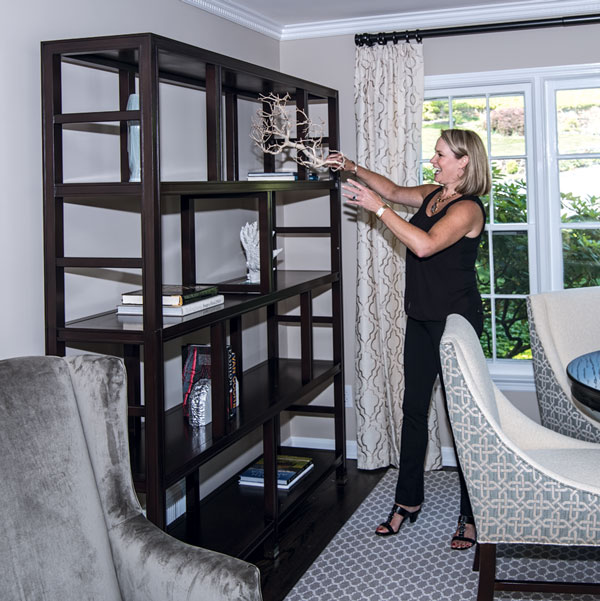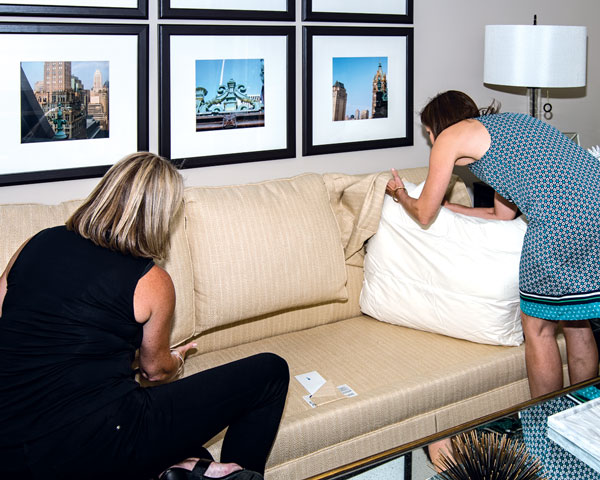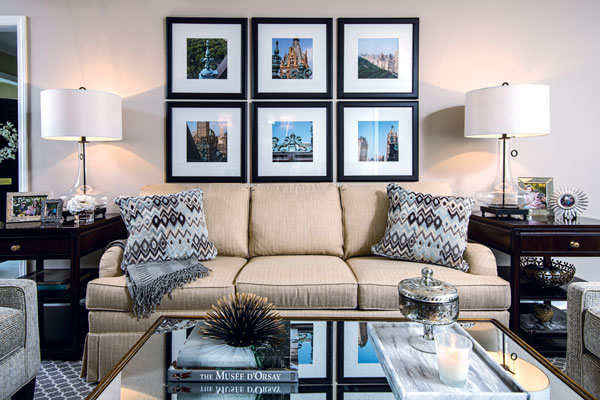Libby Langdon Shares Tips, Quips & Tricks
Writer Meg Fox | Photographer Marisa Pellegrini | Designer Libby LangdonLooking Up
There are three levels to every room: the floor, everything that’s upholstery height (about 38 inches) and everything above that. What’s happening in the upper area of the room? “For me, I feel like tall lamps, tall plants — anything with height — adds scale and dimension and makes a room feel bigger.” As far as adding accents and accessories, “Use a little restraint. You don’t want it completely full.”
Sofa Surgery
If your seat back cushions look a little tired and saggy, consider periodic “sofa surgery” for an instant uplift. Remove the interior cushion from the zippered enclosure, flip it and reinsert it. “You’ll have to finesse it a little bit, but it will make the sofa look newer.”
For Art’s Sake
Some people wait — and wait — until they find that “perfect” piece to hang on their walls. Problem is “if they are living without art, they are living in a room that’s not finished.” The key is to get something on your walls, and it needn’t be fancy. “Photographs [or movie posters] are a great place to start” and can serve as a placeholder until you find something you really love. Stacked art or “multiple pieces hung as a grouping can have just as much impact as a really large piece of artwork.” When framing, “the mat is everything. It makes it look more artful and finished.”
Save or Splurge
“Splurge on big moments in the room,” such as upholstery, which you will be sitting on the most and where you will not want to cut corners on comfort and construction. How to save? If you can, choose from among the thousands of fabrics manufacturers typically offer in their upholstery line, which will save you from tagging on additional costs. For instance, if using a customer’s own material, “one chair could take six to nine yards worth of fabric depending on what the repeat is, which can really up the price on things.” In the case of the flame-stitch fabric the homeowner loved (but used judiciously on accent pillows and ottomans) “it was worth spending the money” because it was a “connector fabric” that tied the color scheme together.




